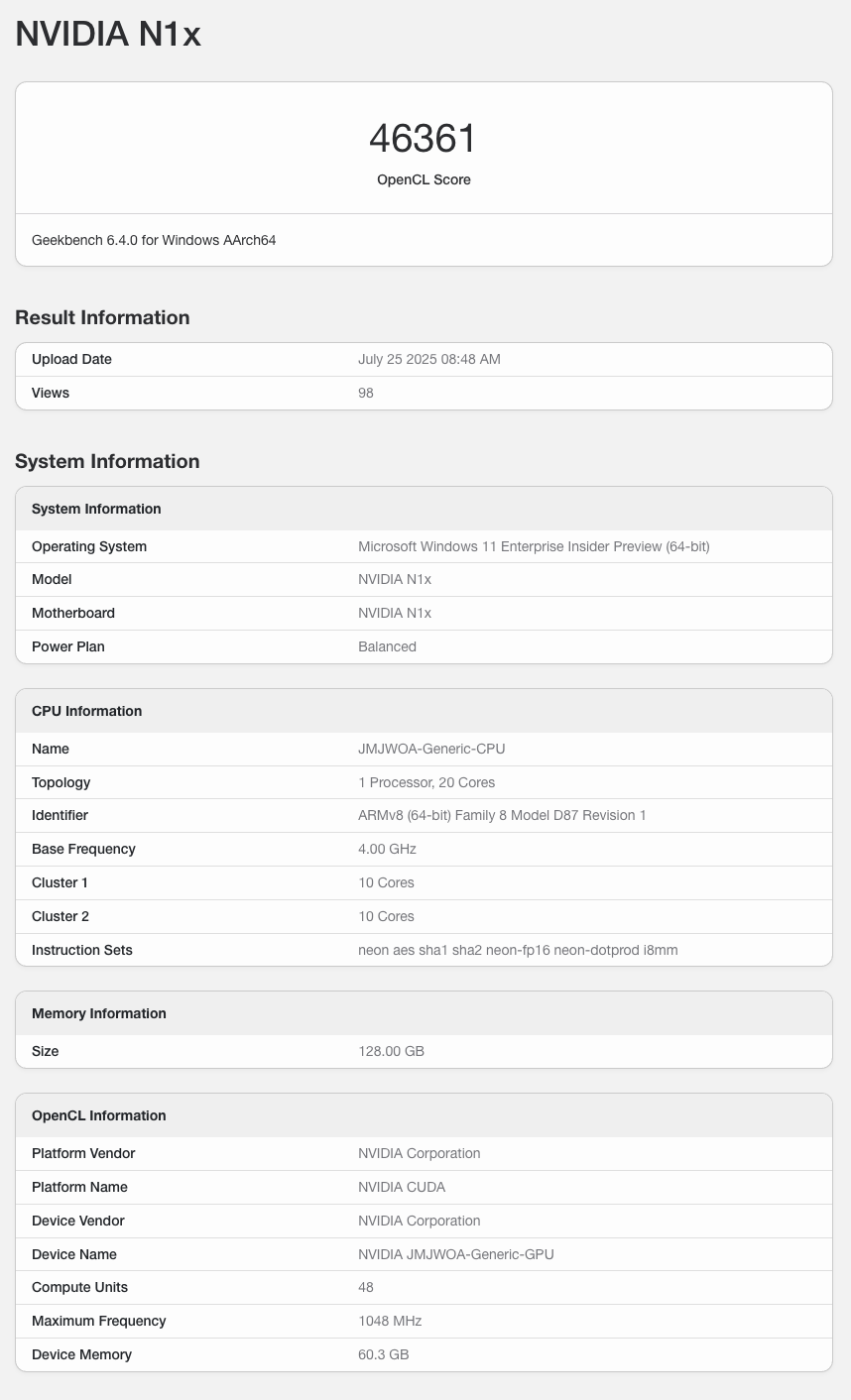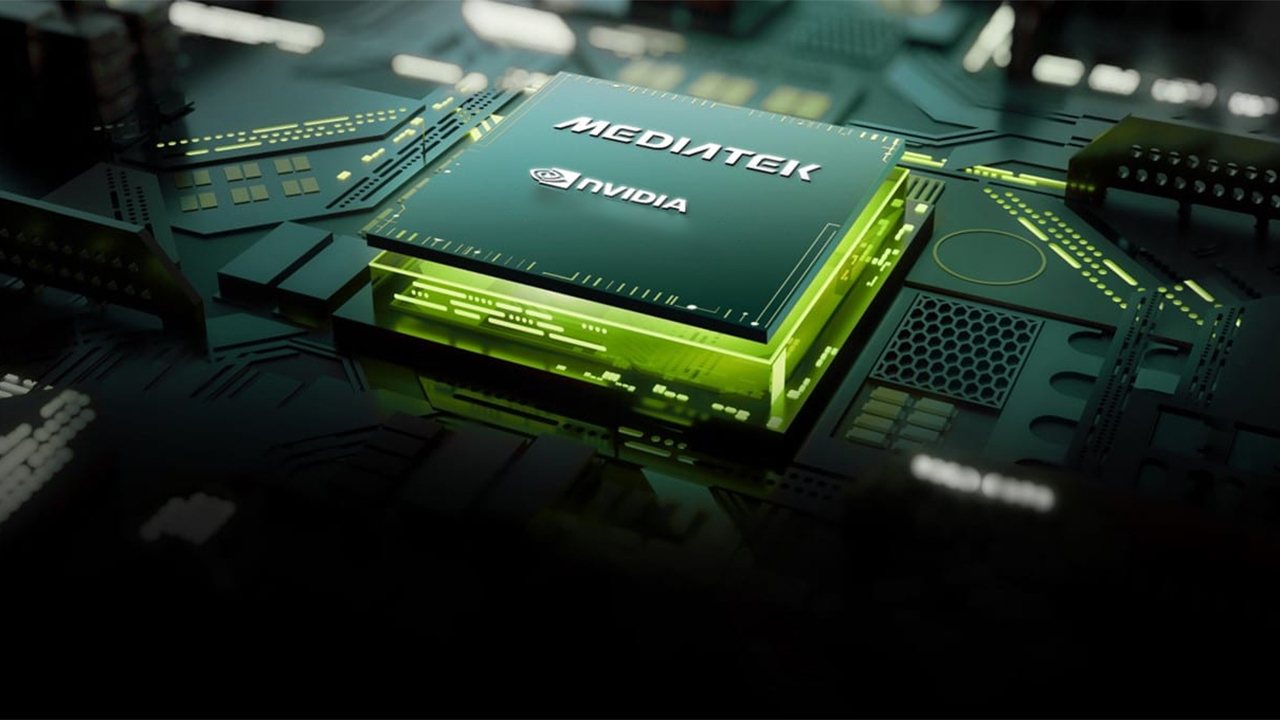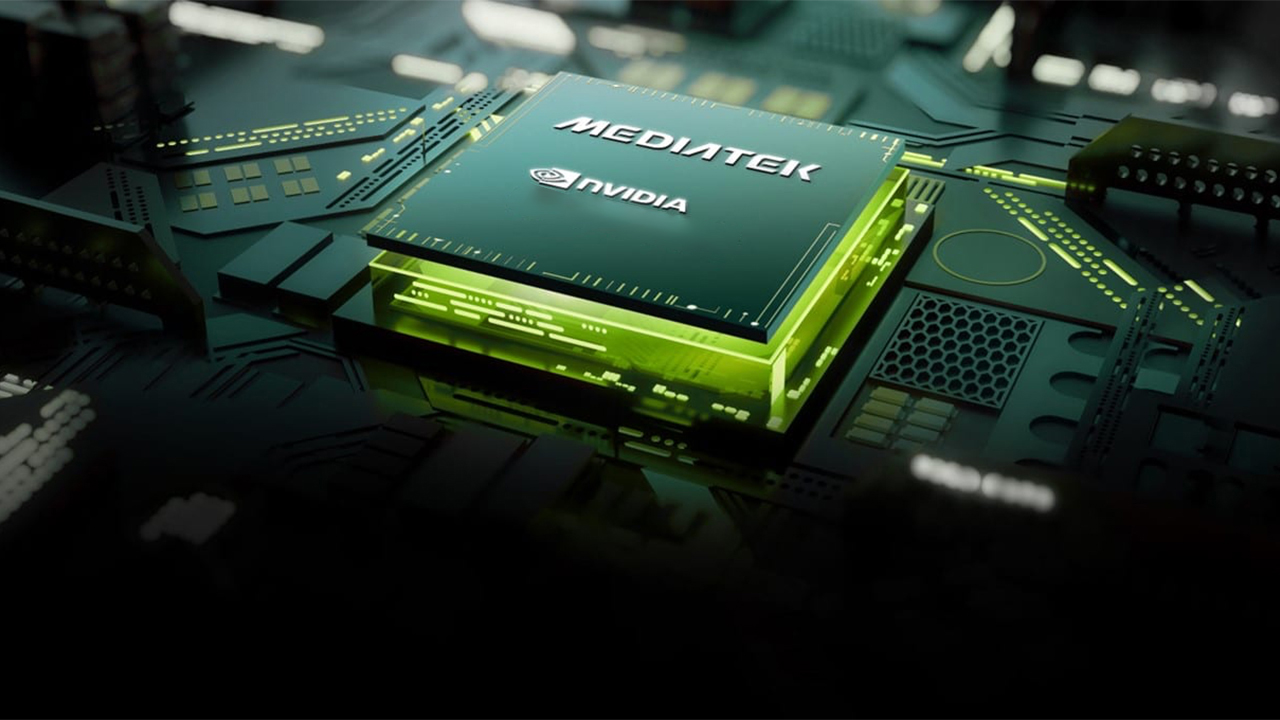Nvidia’s long-rumored and long-delayed N1X SoC has broken cover once again, this time revealing its GPU capabilities through a fresh Geekbench OpenCL listing. We’ve seen various CPU-focused leaks surrounding this chip before, but this provides our first genuine look at the GPU. That being said, this isn’t final silicon—it’s an early engineering sample—but the details are enough to show where Nvidia is headed with its first consumer-class ARM SoC for laptops and possibly desktops.
The Geekbench entry confirms a 20-core CPU setup split into two 10-core clusters, built on Nvidia’s Grace architecture. More importantly, it confirms 48 Streaming Multiprocessors (SMs), translating to 6,144 CUDA cores—the exact count as the desktop GeForce RTX 5070. Interestingly, these specs also match Nvidia’s GB10 Superchip, which currently powers the DGX Spark AI mini-PCs, suggesting that N1X might be a repurposed, possibly lower-power version aimed at the mainstream market. After all, they’re both ARM-based chips developed in unison with MediaTek.
Performance, however, is still in the rough. This sample clocked in at a modest 1.05 GHz and scored 46,361 in OpenCL, roughly in the territory of the RTX 2050. The reason is power and frequency limits, which are typical of early prototypes, as well as the absence of dedicated GDDR memory, since the SoC relies on shared LPDDR5X.
You may like
-
![]() Nvidia and MediaTek may unveil jointly developed ‘N1’ Arm chips for Windows PCs at Computex
Nvidia and MediaTek may unveil jointly developed ‘N1’ Arm chips for Windows PCs at Computex -
 Intel’s rumored ‘Nova Lake-AX’ allegedly packs insane specs but might never launch
Intel’s rumored ‘Nova Lake-AX’ allegedly packs insane specs but might never launch -
![]() Nvidia’s new consumer desktop PC chip reportedly delayed well into 2026
Nvidia’s new consumer desktop PC chip reportedly delayed well into 2026

Even in this state, the N1X’s iGPU is already outpacing every modern integrated GPU, including Apple’s M3 Max and AMD’s 890M, which top out at around 37,500 in similar benchmarks. The GPU performance ceiling is higher, given that a fully powered RTX 5070 boosts to 2.5 GHz with a 250W TDP, while the N1X is capped at around 120W for the entire chip.


